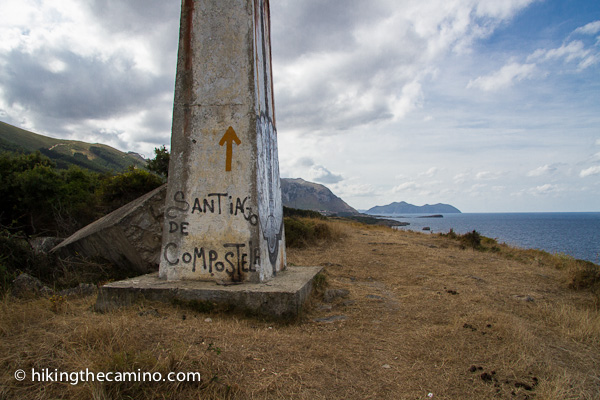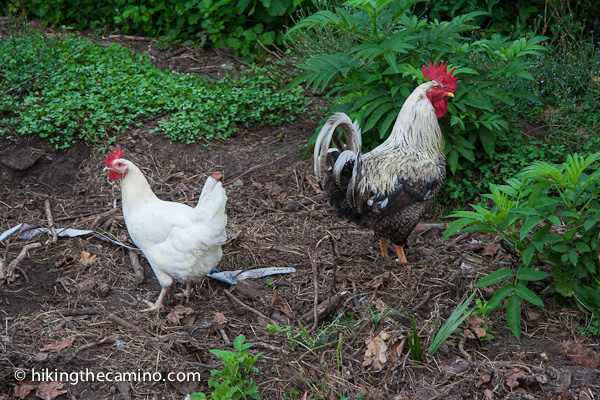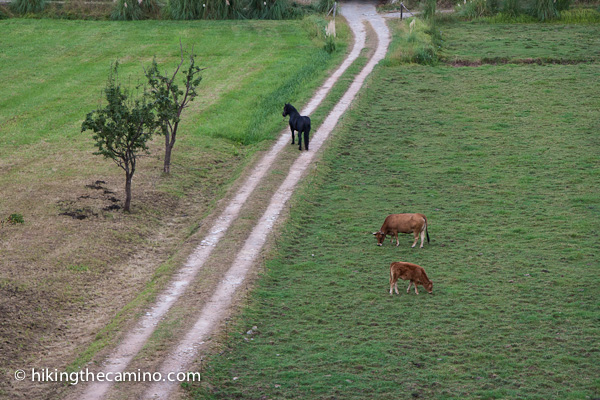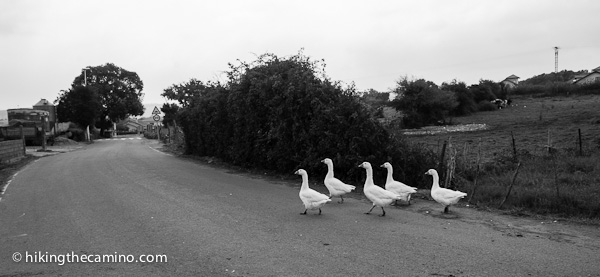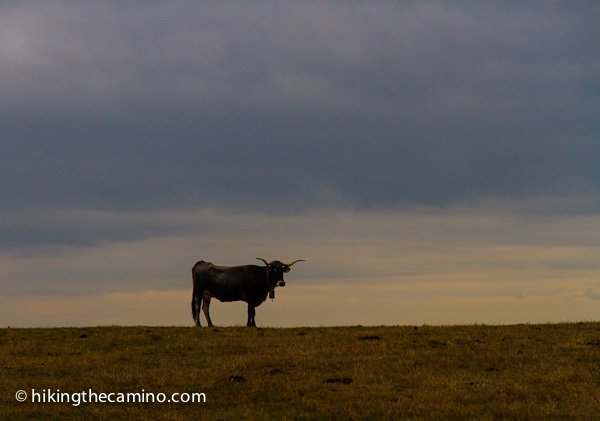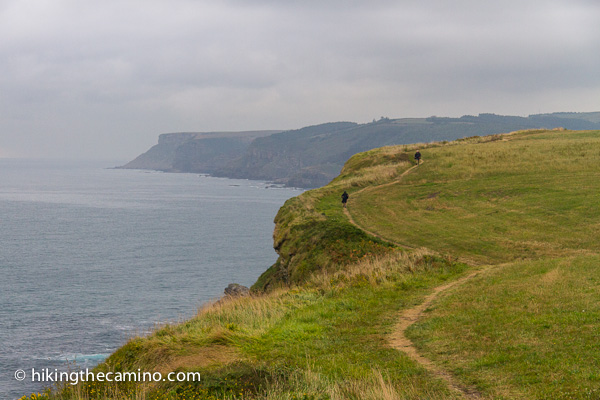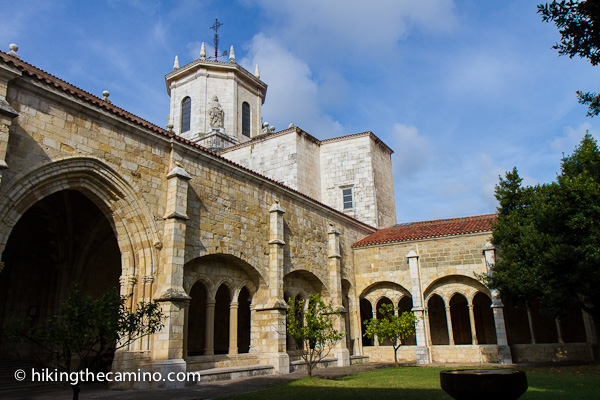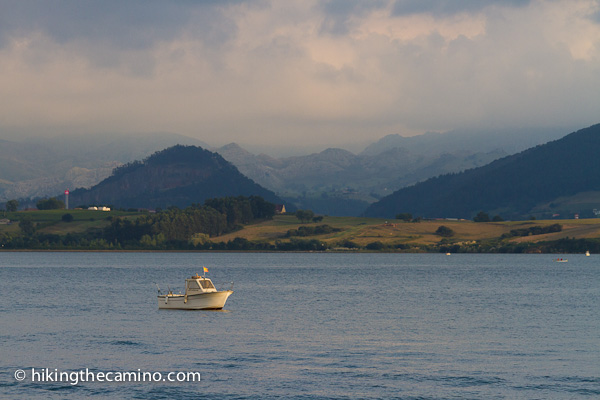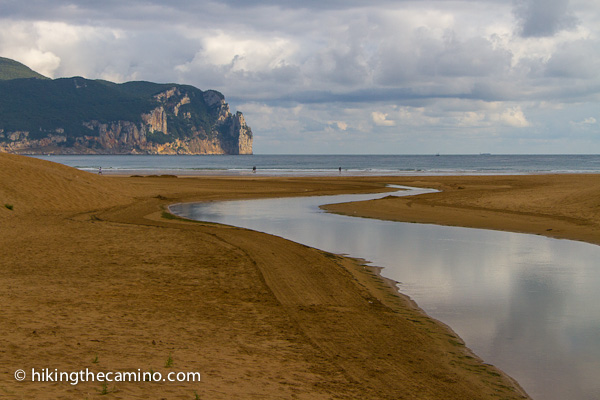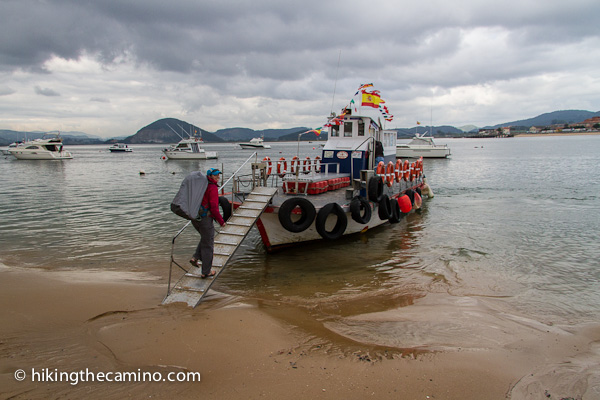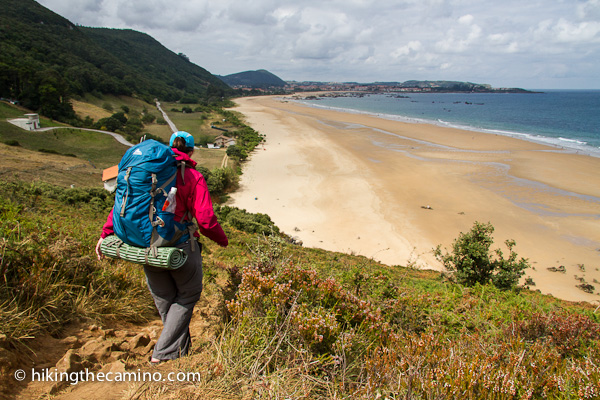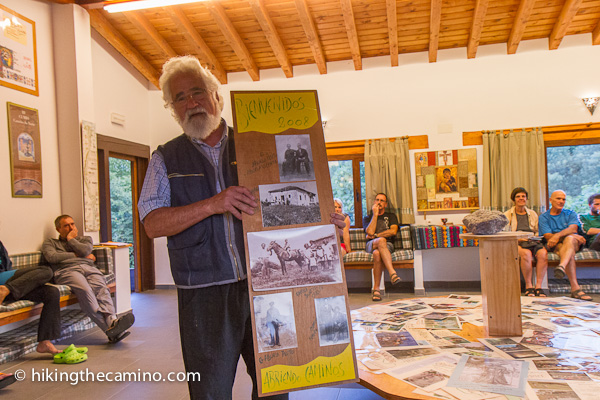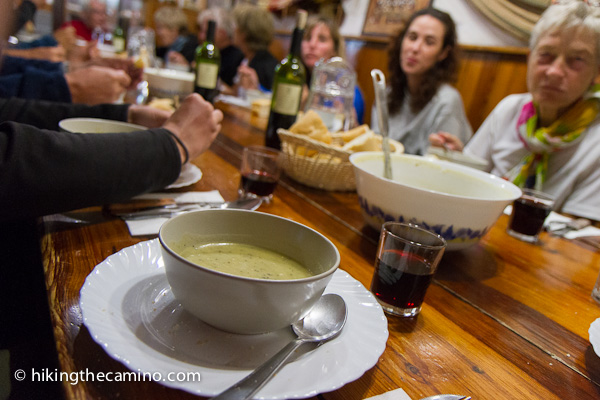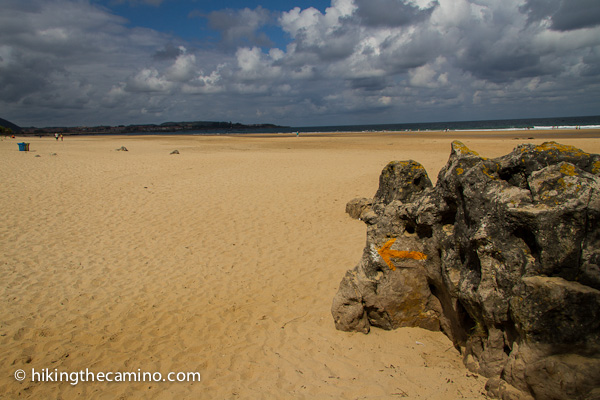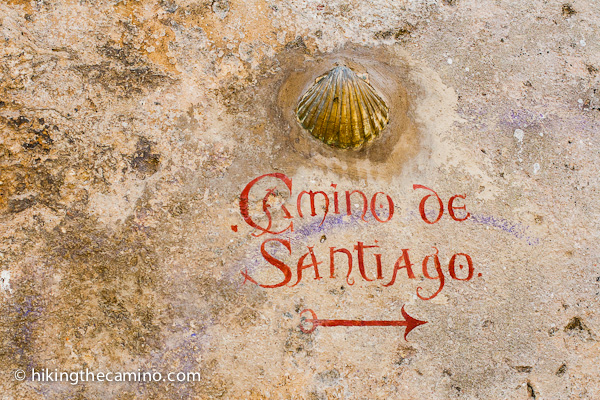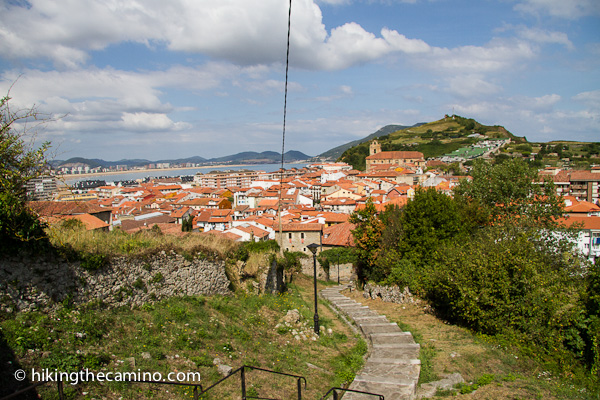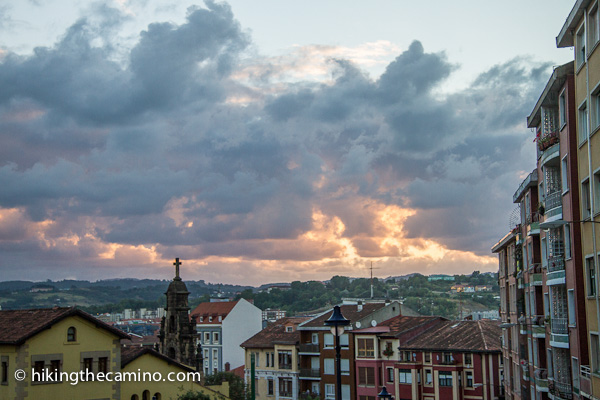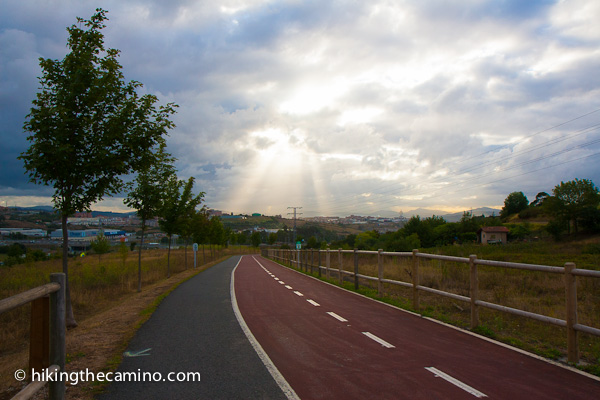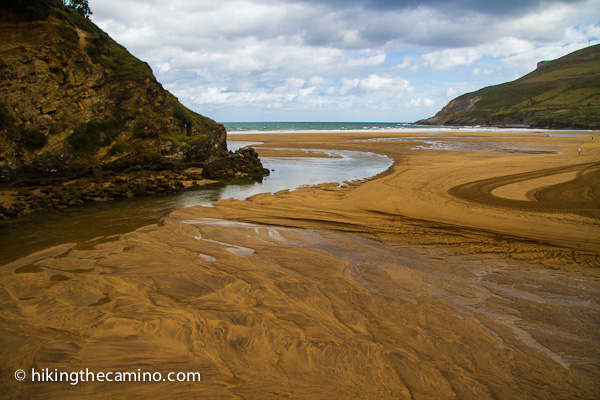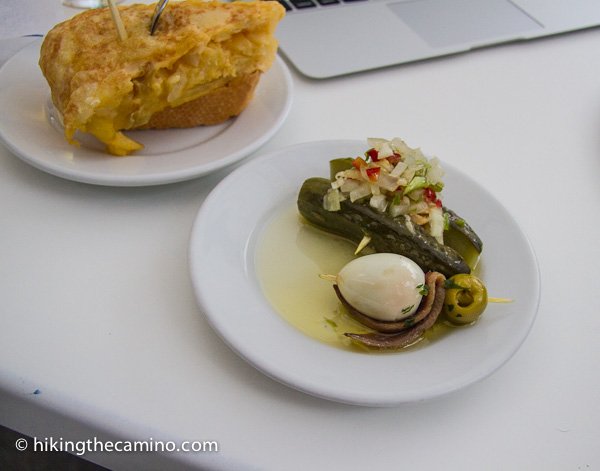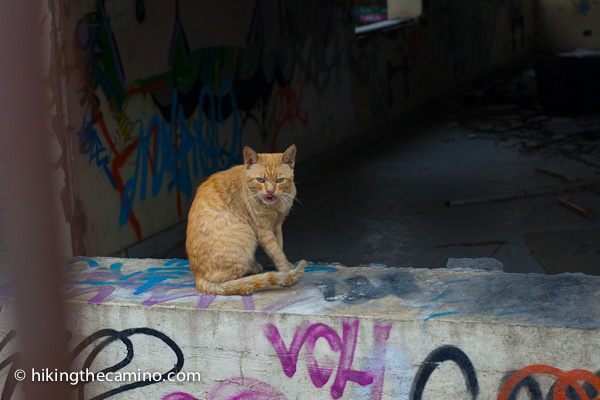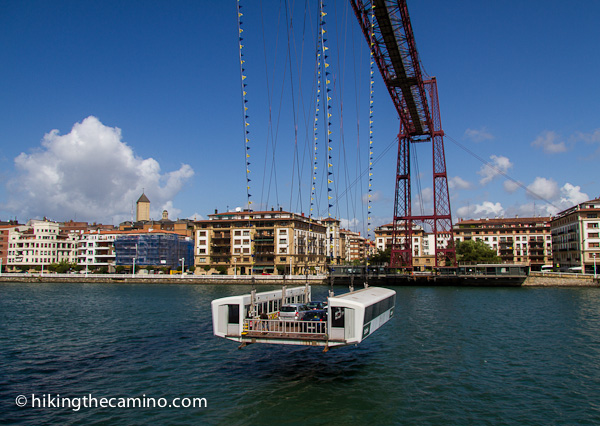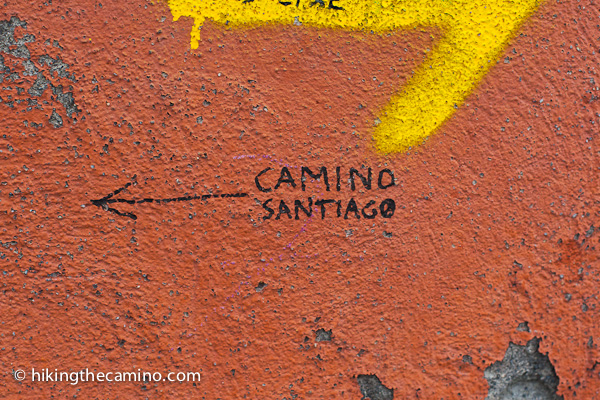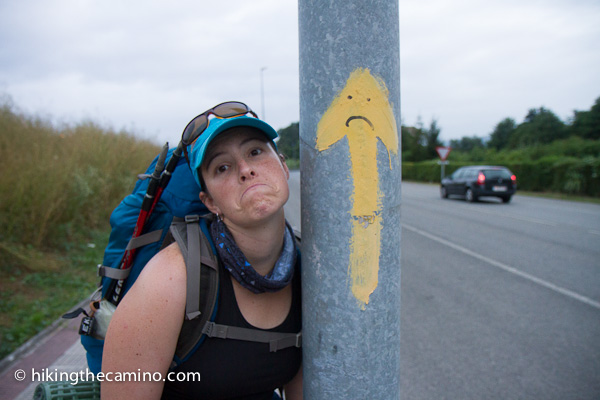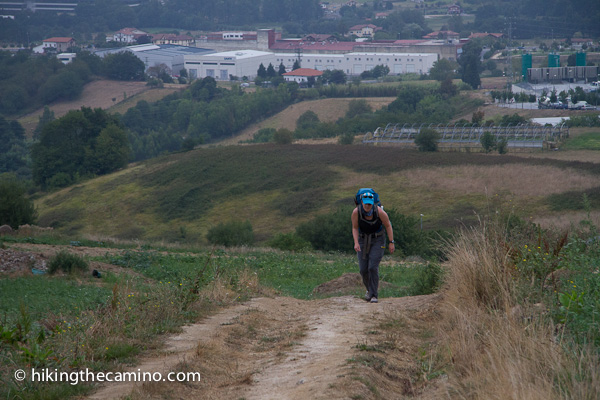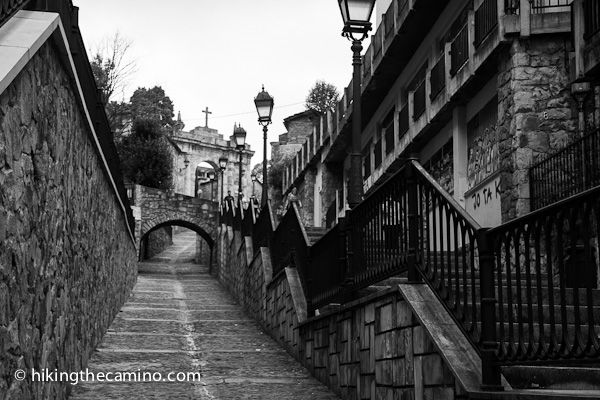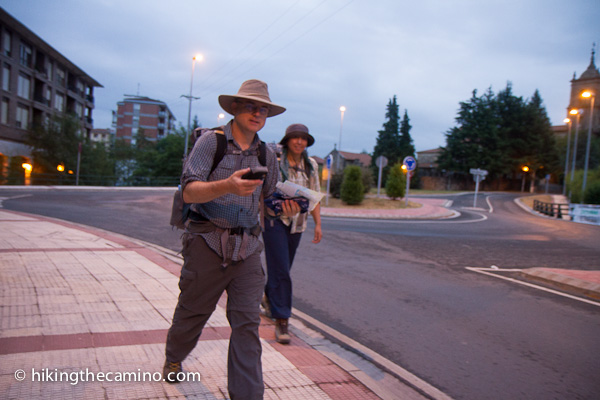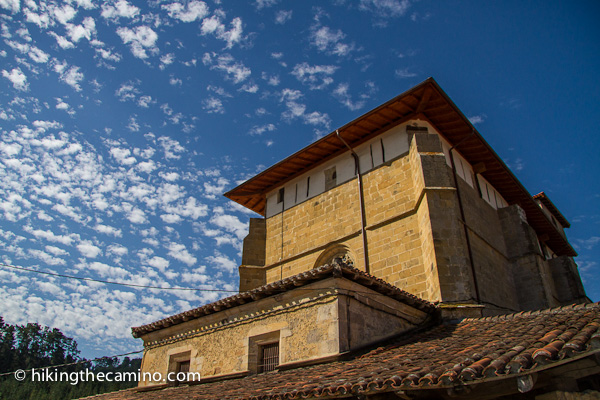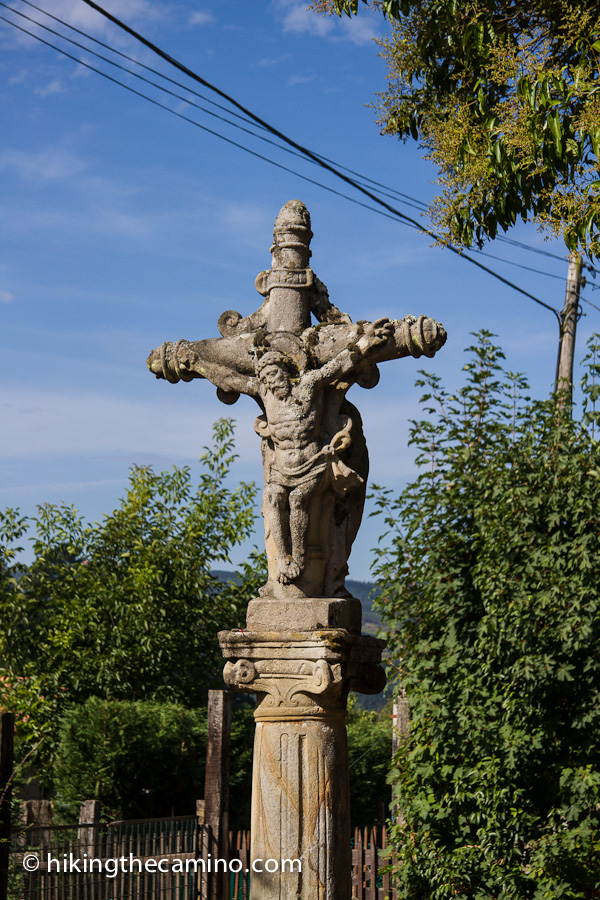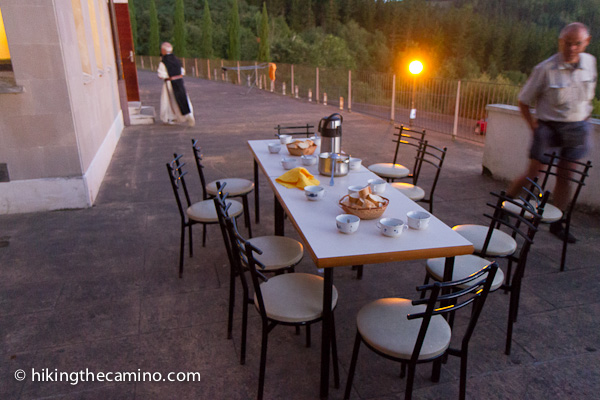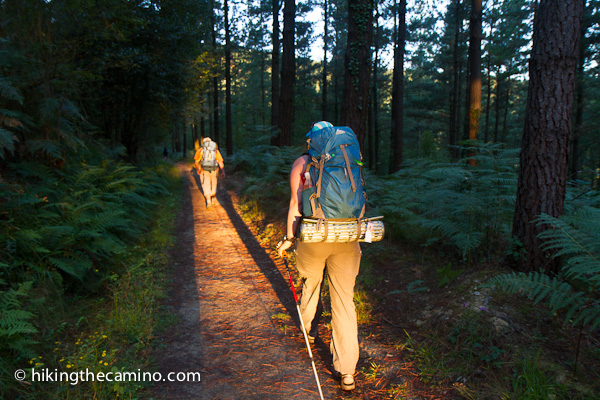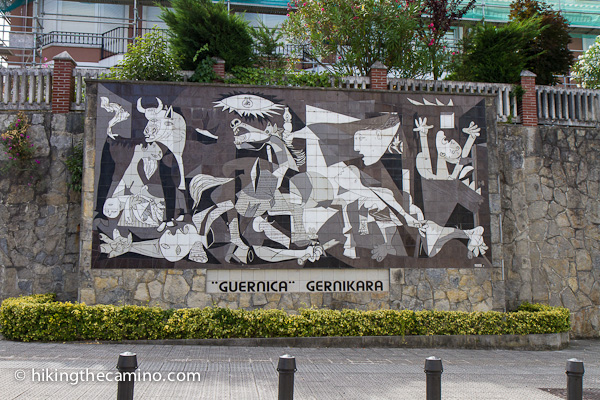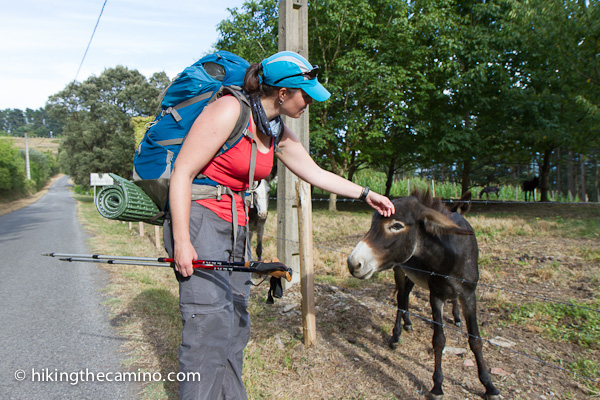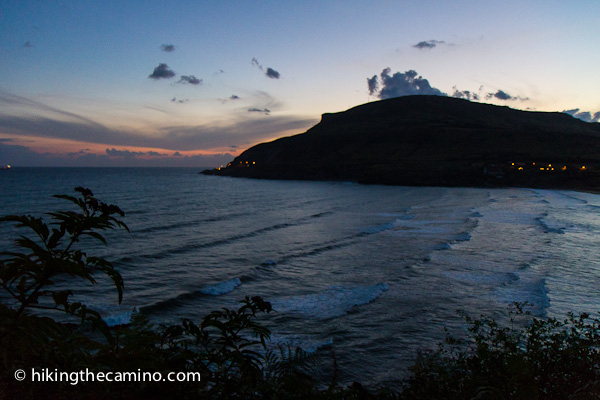
Today Dave and I split up to walk two different route options. Dave took the longer marked path and I took the road option, which is more popular because it is about 8 km shorter. The road walking was not very exciting, at least there was little traffic, but it was hard to see any views over the crash barriers.
Luckily, the last few kilometers are marked off-road and I finally got to walk a dirt path. This one went up and over the hills between Mioño and Castro-Urdiales, with spectacular sea views. Castro-Urdiales is a beautiful town with a remarkable church and castle towering over the old city.
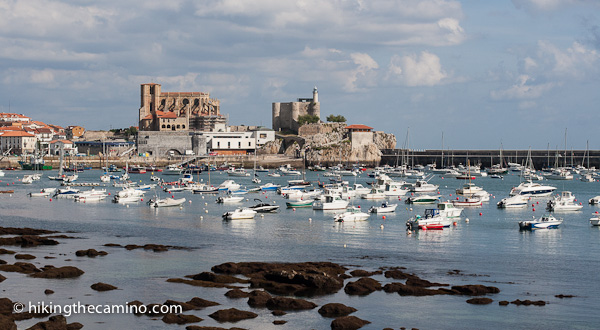
However, at the Castro-Urdiales albergue, I had one of the strangest and worst experiences I have ever had on a Camino walk. I arrived to the albergue around 11:30am, and it did not open until 3pm. I was the first pilgrim to arrive, and the door was open. I poked my head in the door and said “hola?” hoping that the hospitalero was there and would let me leave my bag so I wouldn’t have to wait there until 3pm.
No one was there, so I went back outside to wait until he came back. There were some neighbor women sitting on the benches outside and I asked them if they thought it would be alright for me to leave my bag inside. They said, oh yes, sure, I’m sure that would be fine. Usually when the albergues are locked, pilgrims just line up their packs outside the albergue, but since it was unlocked I went on in and left my bag in one of the lockers provided. I also left a note letting the hospitalero know that I had left my bag and I hoped that was ok.
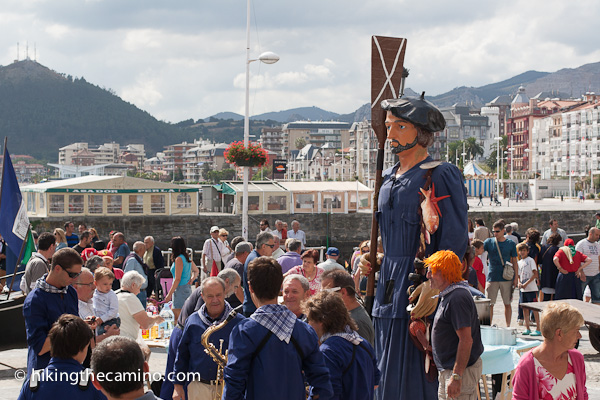
So I went back to Castro (2 km backtracking). On my way back I passed a pack of about 10 pilgrims, and waved at those that I knew and told them there was space in the albergue. I walked around town, visited the church and castle, and took some pictures of a food festival that was going on.
I met Dave in town (as he had walked farther) and we returned to the albergue. By this time there was a line outside of about 20 people (the albergue has 16 beds but some tents in the yard for overflow), even though the albergue did not open for another 1.5 hr. I was regretting putting my bag inside as there was another albergue in only 7 km and we could keep on moving and free up more beds at this crowded albergue.
So a little before 3pm I was hanging out near the door in order to talk to the hospitalero about how my bag was already inside. An older “pilgrim” man who was one or two places behind me in line starting YELLING at me, telling me how he could not believe that I would just leave my bag and go have fun while everyone was waiting in line for hours. He said, “Is this your first Camino? Because I have done SIX Caminos and this is absolutely against the rules!” He went on and on about how selfish and rude and against the rules this was, like he was absolutely disgusted by the very thought of leaving a bag.
He made it sound like I was some kind of cold, calculating manipulator who wanted to steal beds out from under tired older people. I tried to explain to him that I couldn’t care less about being “first” and having first pick of the beds, and that since my husband arrived later from walking farther, he would not get a bed either so I would camp outside with him or go to the next town anyway. This man would not listen to me and when Dave tried to defend me, the man walked toward him in such a threatening way I was afraid he was going to hit Dave. I kept saying, I’m not even going to take a bed here, and I would always gladly give my bed to someone that needed it, but he would not hear me.
(It is not against the rules, some of his group and I had done the same thing the night before in Pobeña, and many albergues encourage people to leave their bags so they don’t waste hours sitting outside).
By this time, everyone in the line was listening to this man dress me down, and several people decided to keep walking to the next town because of the uneasy negative mood this man was creating. The hospitalero finally came at 3pm, so I explained to him my situation and that I just wanted to get my bag and go to the next town. At this point I was crying and very distraught. The hospitalero didn’t care at all that I had left my bag inside and was prepared to give me first pick of the beds. He asked me why I wasn’t planning to stay, so I told him about the man who yelled at me and told me I was cheating. The hospitalero was so so kind and said “Nobody can tell you you can’t sleep here, give me your credential, you are sleeping here!”
In spite of his kindness, I just couldn’t stand to be around this man and his hurtful, untrue words and inability to listen to me explain. I took my bag and left, and as I went out the door, the other pilgrims in line gave me sympathetic looks and said “buen camino.”
I was so angry and hurt that the 7 km to Islares went very quickly and actually the afternoon sun was really beautiful along the coast. The next albergue had enough beds so everything worked out fine in the end. I have met a few inconsiderate people on the Camino from time to time, but I have never been personally attacked so viciously.
Author Sil Nilsen, or “amawalker” on the Camino forums, has an interesting piece about “Camino fundamentalists,” a phenomenon among some Camino walkers where they believe there is only one way to walk the Camino: their way. Some scoff at those who use luggage transport for their bags or stay in hotels, as they believe “real” pilgrims have to carry their bag and stay in the cheap dorms. I think it’s important to walk with an open mind and a generous spirit since we don’t know the circumstances of those around us. For example, on the Francés route, I met a Croation man who was recovering from a terrible motorcycle accident that almost claimed his leg. He was using luggage transport and walking very short days and sometimes taking the bus, but had more determination and love for the experience than so many able-bodied pilgrims I had met.
I wish there were a way to make the albergue system more fair, as it is mostly strickly first-come, first-serve. On the Francés route there are so many albergues that it doesn’t matter as much, but they are fewer and farther between on the Norte. The pilgrims who get there first are often the strongest, and those who have walked the shortest days (in other words, those who need a bed and a good nights sleep the least). Those who are tired or injured arrive later and perhaps do not get a bed or have to keep walking for a bed. We like to do longer days (more like 30km instead of the 15 that some people average) but we can’t hope to arrive before those that are doing shorter days.
